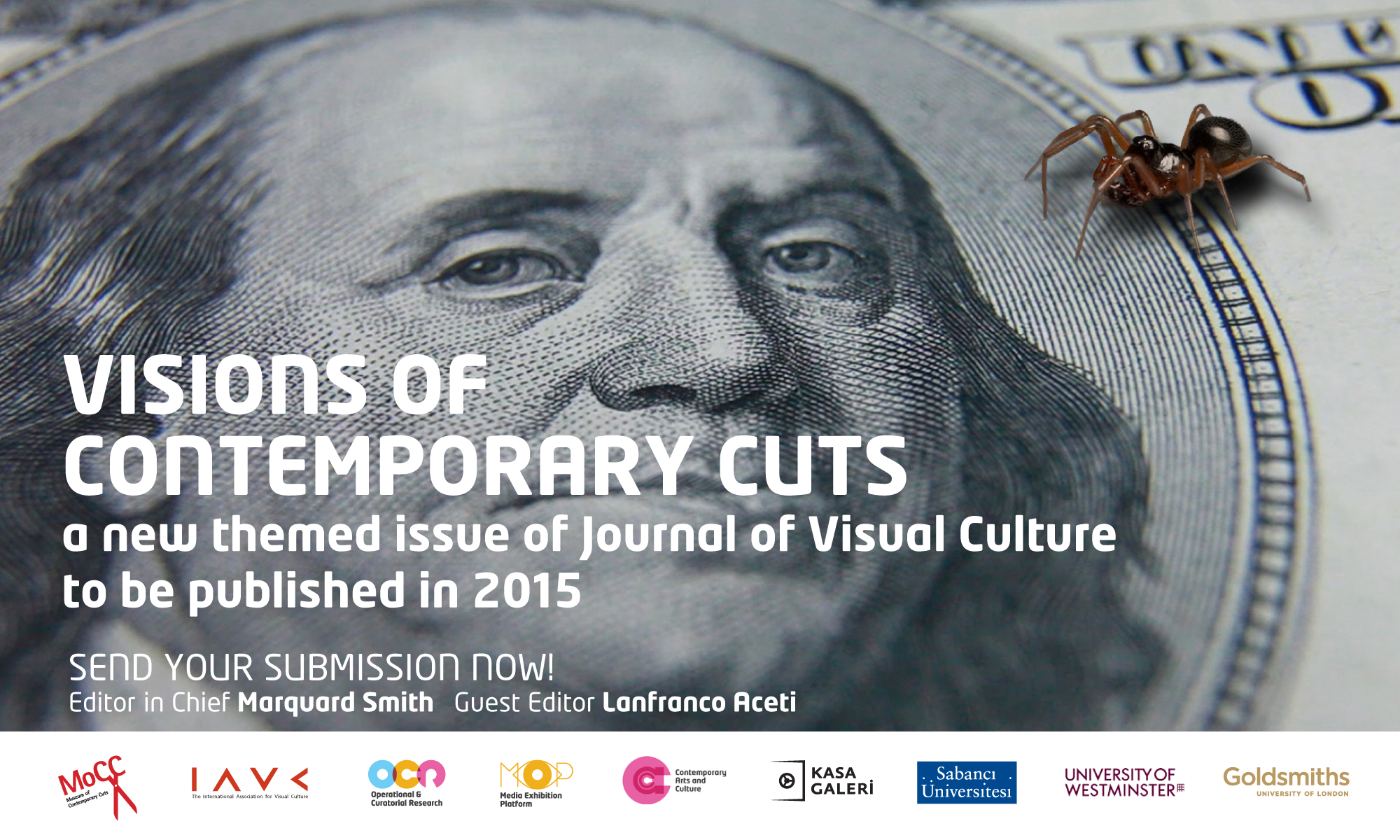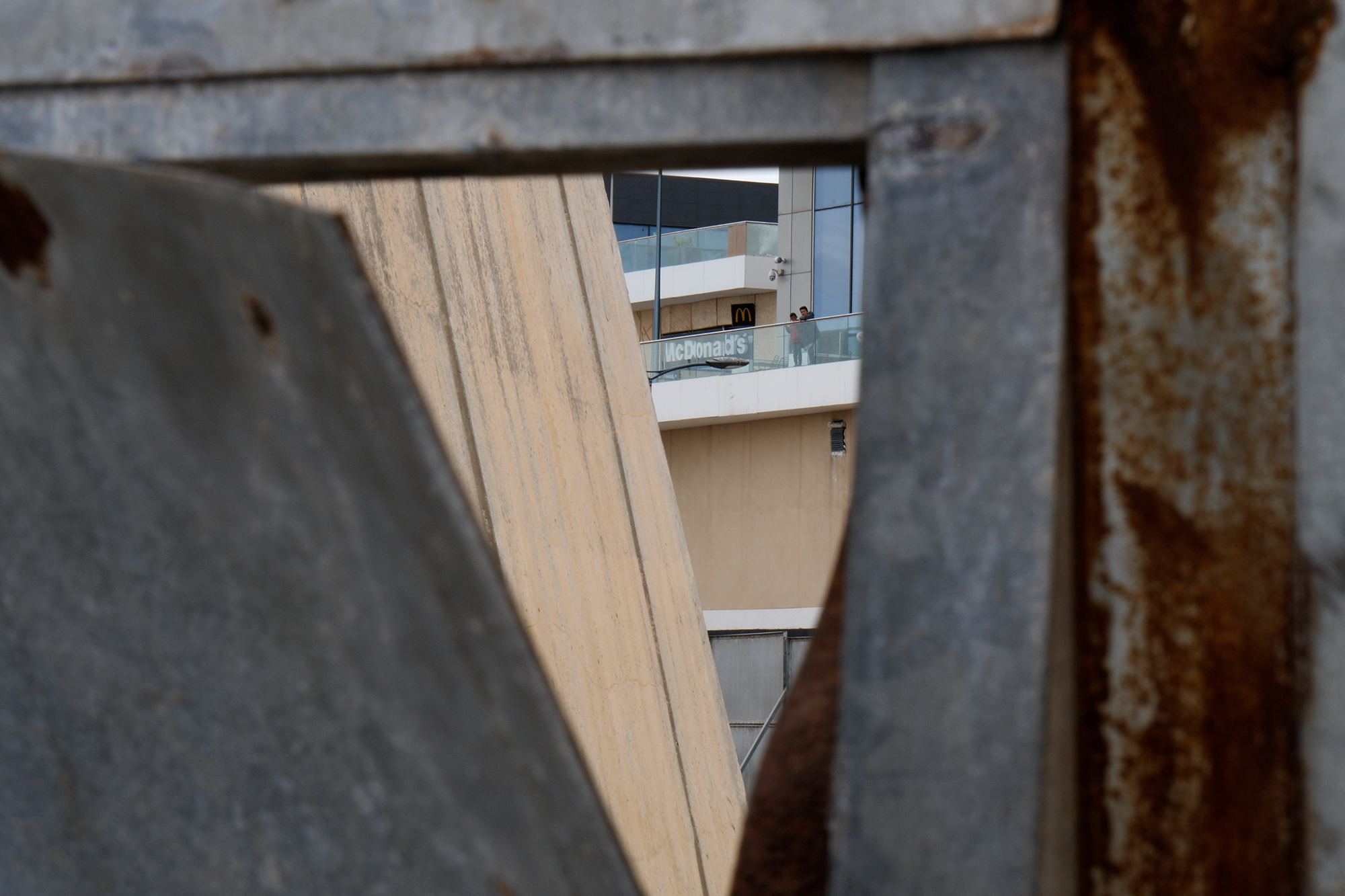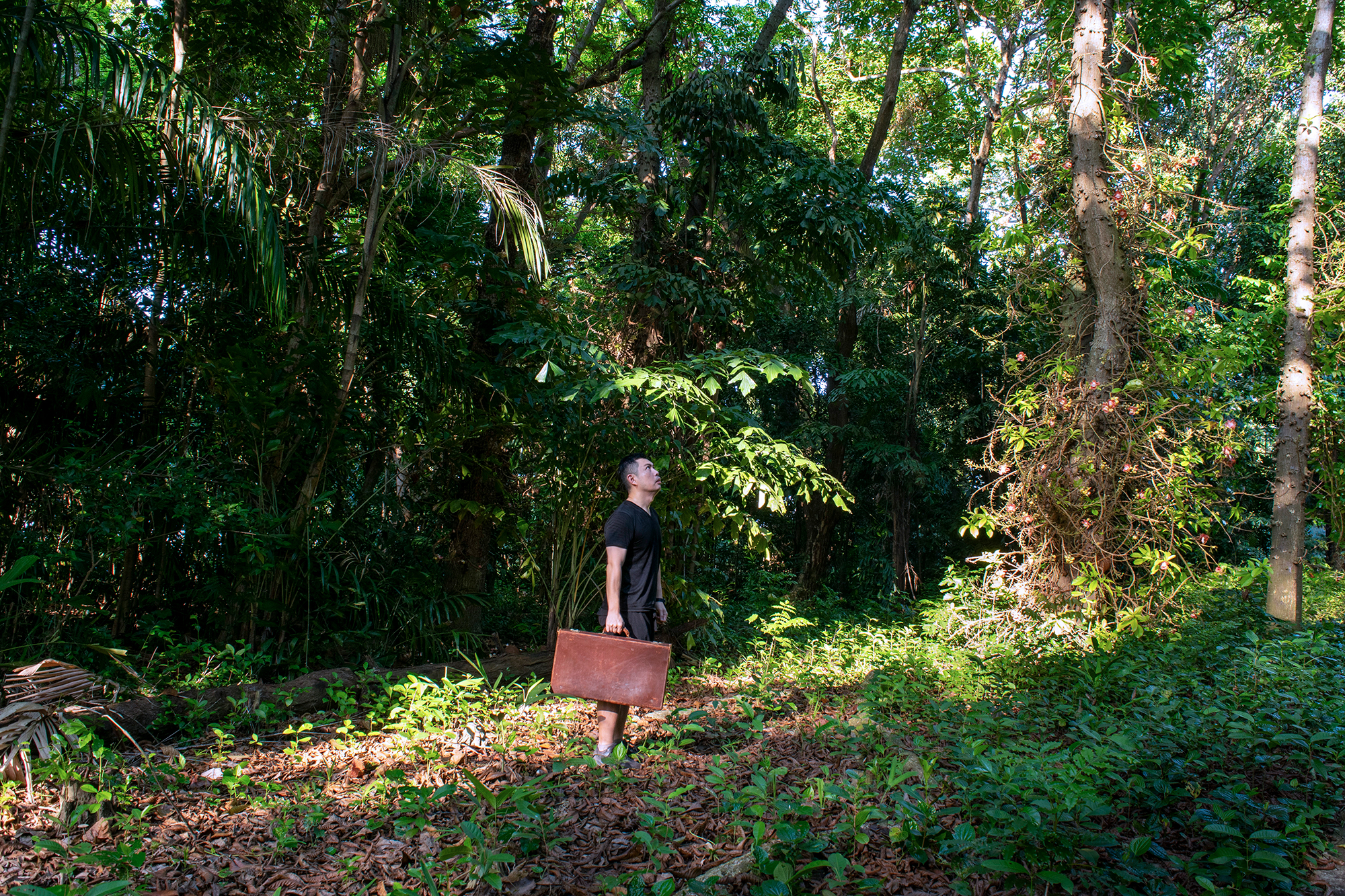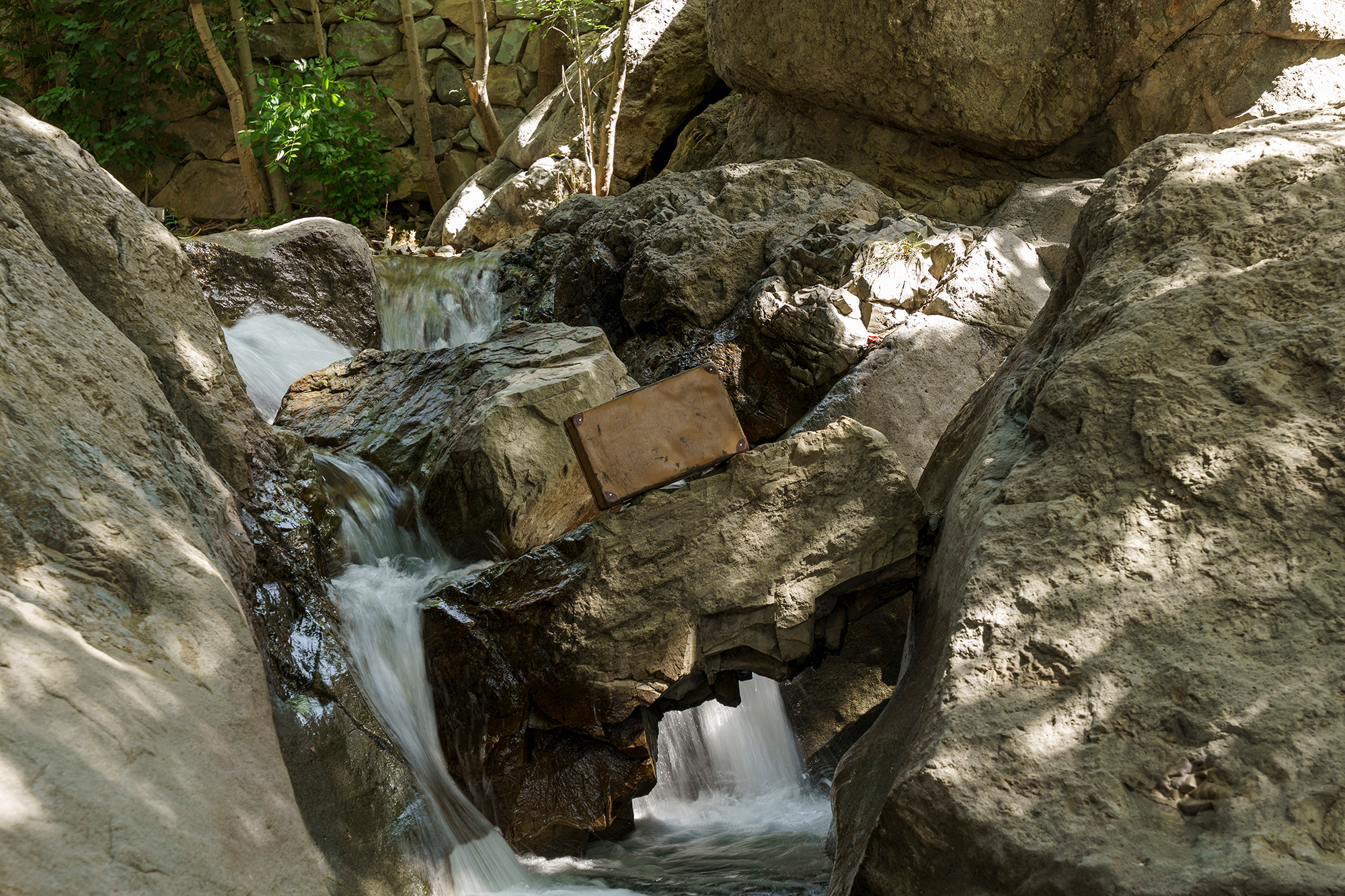
Journal of Visual Culture, in collaboration with the International Association for Visual Culture, Operational and Curatorial Research, the Museum of Contemporary Cuts and Kasa Gallery, is pleased to announce a new refereed issue titled Visions of Contemporary Cuts.
The issue is guest edited by Lanfranco Aceti, Sabanci University, Istanbul; and Goldsmiths College, University of London.
Visions of Contemporary Cuts is a special call for a refereed issue open to international scholars, curators, artists and thinkers who are provocatively discussing and analyzing the contemporary economic crisis as well as the meaning of the word ‘cuts’ and how these affect contemporary society.
Visions of Contemporary Cuts – Theme
What are the contemporary narratives of the Great Recession (2008-Present) that are defining the politics of economic cuts to the arts, education and social services?
Historically, the narratives and stories of the Great Depression were mainly narrated through institutional forms of representation and visual imagery that presented a portrait of the dispossessed – Dorothea Lange, Walker Evans and Lewis Hine, to note a few of the most well known photographers. Their work of documentation was paid for by the American government, perhaps raising concerns related to an institutionalized form of narrative instrumental to the political realities of the time. The most poignant portrait of the time, Migrant Mother by Lange, is surrounded by a certain controversy: “Florence Owen Thompson revealed her identity in a letter to a local newspaper, the Modesto Bee, stating her dismay about the iconic photograph. She felt exploited by it, never received a penny, and seemed hurt that the photographer never asked her name.” [Michael Stone, ‘The Other Migrant Mother,’ The Open Photography Forum, https://www.openphotographyforums.com/index.php (accessed February 2, 2013).]
What then are the images of today that represent the contemporary economic crisis and symbolize the financial cuts that are being enforced across the arts, education and public health systems? What are the realities of these cuts in the context of societies in crisis such as the United States and Western Europe? Are the politics of rigor and cuts – with their institutionalized discourse – hiding other realities? And finally, what is the impact of the images and contextualized discourses that we as academics, practitioners, curators, and cultural commentators are constructing?
Workers, pensioners and those who receive benefits and subsidies are presented and portrayed as if they are ‘leeching’ from a healthy productive private financial sector. Workers, people on benefits, poorer students who receive financial aid, and poorer pensioners all are compiled within a definition of burdening and burgeoning social costs that deserve to be cut from the rest of an ‘efficient and productive society.’
The narrative, presented visually and otherwise, is that of a system where social rights are ‘unproductive’ in a redefinition of society by way of the economic and the uneconomic. This raises a larger philosophical question, for we have to ask ourselves what it means for contemporary societies to be all about economic gain and no longer about social solidarity, not least because the state has definitely blurred the demarcation line with the corporate.
Thus, in the contemporary context of image, how are these new narratives and images of cuts being developed, disseminated and consumed? What are their socio-political purposes and values? And what new political/aesthetic trends do they present or re-present?
The word cut is charged with connotations and meanings that represent the destruction of a whole: it is a maiming of an entirety, it is a slashing, an axing, a separating, dividing, carving, slicing, dissecting, lacerating, etc., of the body of our society. Nevertheless in contemporary discourse, cuts have come to acquire a ‘positive’ (albeit deeply ideological) terminological aura: that of a saving grace, the last resource to re-create a new and healthy society. But are the cuts inflicted onto the social body exercising a positive function, if the cuts are affecting only the lower strata of society? Or are they representing the final ideological enforcement of ideas of post-capitalism that by substituting its ideology with that of the state’s ‘social contract,’ transforms 99% of the citizens into commodified laborers with no rights?
This themed issue of Journal of Visual Culture seeks to address these questions from the perspective of contemporary visual culture theory and practice in order to find the characterizing imageries of the Great Recession that provide an insightful understanding of the current social turmoil beyond institutional narratives. In particular we seek papers that address, although are not limited to, the following themes:
1 Cuts and their visual mythology in contemporary discourses
2 Cuts, protest and resistance
3 Narratives of cuts
4 Lives cut: suicides in the economic crisis
5 The visual politics of cutting
6 Cuts and social justice
7 Dreams cut: the failing of upward social mobility
8 Creative finance and art cuts
9 Comparative analyses between historical images of poverty and contemporary poverty
10 The role of media technology in distributing imageries and in creating narrative of cuts
11 How to curate the visuality of cuts and its social impact
12 Artistic practices in a time of crisis
13 Other related topics
These are some of the possible examples of thematic strands for this forthcoming issue.
Visions of Contemporary Cuts – Important Dates
May 10, 2014: submission of article of 1500 words.
June 1, 2014: review of full papers and final acceptance.
June 1, 2014: request signature of copyright agreement and image copyright clearance.
September 1 to October 1, 2014: evaluation of revised and finalized papers in the context of the full issue.
October 1, 2014: evaluation of the issue.
January 1, 2015: work on the final version copy-edited and design ready of the issue.
May 1, 2015: submit for publication in Fall/Winter 2015.
Visions of Contemporary Cuts – Where To Submit
Please, email your submission as a Word document (.doc or .docx) to: info [ at ] museumofcontemporarycuts.org with subject heading: JVC Visions of Contemporary Cuts.
Visions of Contemporary Cuts – Editorial Team
Editor: Lanfranco Aceti.
Editorial Managers: Ozden Sahin and Jonathan Munro.
Editorial Assistant: Caglar Cetin.
Visions of Contemporary Cuts – Other Important Information
This issue of the Journal of Visual Culture is a collection and survey of perspectives on the contemporary economic crisis and the representations of the word ‘cuts.’
The issue will be followed by a multi-authored book (publisher to be announced) which will draw, in large part, from the authors published in the first instance within the Visions of Contemporary Cuts‘ journal issue.




